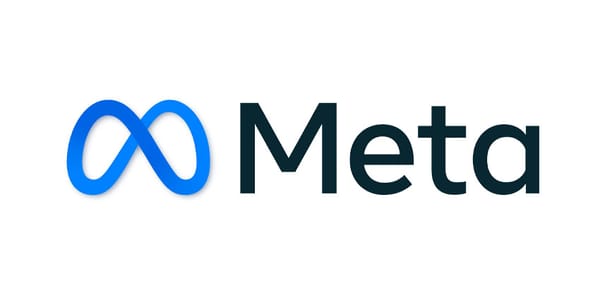Batch vs Stream Processing: A Comprehensive Guide to Choosing the Right Data Processing Approach
Discover the differences between batch and stream processing. Learn about their advantages, use cases, and how to choose the best approach for your data processing needs

Introduction:
Imagine you're working with data that updates in real-time, like stock prices or social media feeds. You need a system that processes this data as it arrives to make timely decisions. On the other hand, if you're handling large volumes of data that doesn't require immediate processing, a batch processing system might be more suitable. Understanding the differences between batch and stream processing can help you choose the right approach for your data needs. Let’s explore these two data processing models, their strengths, and how they can be applied in various scenarios.
What is Batch Processing?
Batch processing involves handling data in large groups or "batches" at scheduled intervals. Instead of processing each data item individually as it arrives, the system collects and processes the data in bulk.
In a batch processing system, data is collected over a period and processed all at once. For example, a payroll system might process employee timesheets in batches, generating paychecks on a weekly or monthly basis. This approach is efficient for tasks that don’t require immediate results and can handle large volumes of data in one go.
Batch processing is typically used in scenarios where data doesn't need to be processed in real-time, such as end-of-day reports or data analysis tasks that can be completed periodically.
What is Stream Processing?
Stream processing, on the other hand, deals with data in real-time or near-real-time. This approach processes data continuously as it arrives, allowing for immediate analysis and action.
In a stream processing system, data is processed one piece at a time as it flows through the system. For instance, an online fraud detection system might analyze each transaction in real-time to identify suspicious activity. This real-time processing capability is crucial for applications that require timely insights and responses, such as monitoring live traffic data or analyzing social media feeds.
Batch Processing vs Stream Processing: Key Differences
Data Latency: Batch processing involves delays because data is collected and processed in bulk at scheduled intervals. Stream processing minimizes latency by processing data as it arrives, providing immediate insights and actions.
Processing Model: Batch processing is suited for scenarios where data can be aggregated and processed periodically, while stream processing is designed for scenarios that demand real-time data handling and immediate responses.
Scalability and Flexibility: Batch processing systems can efficiently handle large volumes of data but may struggle with real-time requirements. Stream processing systems are highly responsive but can be more complex and resource-intensive to scale.
Advantages and Disadvantages of Batch Processing
Advantages:
- Efficiency: Batch processing is often more efficient for large-scale data processing tasks because it handles data in bulk.
- Simplicity: Batch systems are generally simpler to design and implement compared to real-time systems.
- Cost-Effectiveness: Processing data in batches can be more cost-effective, especially when dealing with large volumes of data at scheduled intervals.
Disadvantages:
- Latency: The primary drawback is the delay in processing data, which may not be suitable for applications requiring real-time insights.
- Complexity in Real-Time Data Handling: Batch systems are not designed for handling real-time data, making them less suitable for applications that require immediate action.
Advantages and Disadvantages of Stream Processing
Advantages:
- Real-Time Processing: Stream processing allows for immediate analysis and response to data, making it ideal for applications that require timely information.
- Responsiveness: The ability to process data as it arrives ensures that systems remain up-to-date with the latest information.
- Up-to-Date Insights: Stream processing provides continuous insights, which is crucial for applications like fraud detection or live monitoring.
Disadvantages:
- Complexity: Stream processing systems can be more complex to design, implement, and maintain compared to batch systems.
- Higher Resource Requirements: Real-time processing often requires more resources, such as computing power and memory, which can increase costs.
When to Use Batch Processing vs Stream Processing
Choosing Batch Processing: Use batch processing when dealing with large volumes of data that do not require immediate processing. Examples include financial reconciliations, batch reporting, and end-of-day processing tasks.
Choosing Stream Processing: Opt for stream processing when you need to analyze and respond to data in real-time. Suitable scenarios include real-time analytics, fraud detection, and monitoring systems.
Implementing Batch and Stream Processing
Batch Processing Tools and Technologies:
- Apache Hadoop: A popular framework for processing large datasets in batches using distributed computing.
- AWS Batch: A managed batch processing service that helps run large-scale parallel and high-performance computing (HPC) workloads.
Stream Processing Tools and Technologies:
- Apache Kafka: A distributed streaming platform for building real-time data pipelines and streaming applications.
- AWS Kinesis: A platform for collecting, processing, and analyzing real-time streaming data.
Integration Strategies: Many systems use a hybrid approach, combining batch and stream processing to balance the benefits of both methods. For instance, stream processing can handle real-time data, while batch processing can be used for more complex, periodic analyses.
Case Studies: Successful Implementations
Netflix uses stream processing to analyze viewer activity in real-time, providing personalized recommendations and improving user experience.
Bank of America employs batch processing for end-of-day financial reporting, handling large volumes of transaction data efficiently.
Future Trends in Data Processing
The future of data processing may see advancements in hybrid processing architectures that combine the strengths of batch and stream processing. Innovations in edge computing and serverless architectures could also enhance real-time processing capabilities.
AI and machine learning are expected to play a growing role in optimizing data processing by automating decision-making and improving predictive analytics.
Understanding the differences between batch and stream processing is crucial for selecting the right approach for your data needs. Batch processing offers efficiency and simplicity for large-scale tasks, while stream processing provides real-time insights and responsiveness. Evaluate your requirements and choose the method that best fits your use case. Share your experiences or ask questions about batch and stream processing in the comments!




